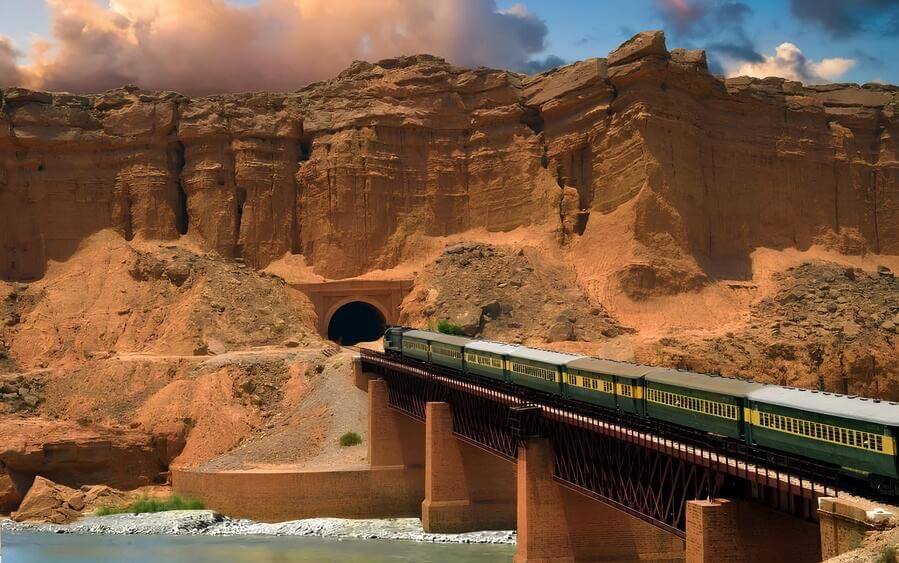By Fakeha Laique
Balochistan, Pakistan’s largest province by land area, stands at a crossroads. Once hailed as a future tourism powerhouse due to its pristine beaches, rugged mountain ranges, and ancient cultural sites, the region now grapples with escalating violence and instability that threaten to derail its economic aspirations.

The ongoing safety issues impact both its development and the well-being of its residents. Imagine going home for the Eid holidays and being stuck on a highway for a couple of days that usually would have taken a few hours; this was the reality for many people in Balochistan this Eid.
The residents of Quetta were not able to entirely celebrate Eid-ul-Fitr, 2025 because of concerns about safety, as well as because Section 144 was put in place. Militant groups perpetrate occasional acts of violence in Balochistan, which stains the present security landscape and threatens locals and tourists alike. Under such clouds of fear, travelling becomes a luxury for people.
Roadways function as lifelines for Balochistan, supporting tourism, but they remain quite vulnerable to insecurity; therefore, they impede smooth travel to well-known destinations, such as Ziarat and Bolan. Locals were barred from travelling within the province because of multiple checkpoints put in place by extremist groups. People faced difficulties reaching their hometown from the provincial capital, Quetta, for Eid holidays.
Furthermore, highway blockade created problems for travelling, The Quetta-Karachi highway, a crucial passageway connecting Balochistan to Sindh, was blocked due to security concerns, leaving locals unable to travel even for basic necessities. Moreover, the fares of the only option left for traveling, i.e., air-travel, soared high, making it impossible for ordinary people to utilize that option. Similarly, in an unfortunate situation, Punjabis are being ethnically targeted while travelling back and forth from Balochistan to Punjab. These attacks create a sense of unease among the rest of the country as people now fear traveling to Balochistan through highways.
The incident of train hijacking that occurred last month, just before Eid, did add to the fear of the residents of the province as well as the tourists. These incidents tarnish the province’s image nationally and worldwide, which stops investment and growth in the tourism field. Recently, the US issued a level 4 travel advisory about Balochistan, advising its people not to travel to this region as extremist groups have conducted deadly attacks in the region.
Despite all the turmoil, Balochistan’s tourist attractions can be a blessing for not only its people but also for the whole country. The province’s surreal beauty can be seen in its diverse topography, ranging from the golden beaches of Gwadar to the enchanting rock formations of Hingol National Park. The province is also home to historical landmarks like the 9000-year-old Mehrgarh archaeological site and the Hindu pilgrimage site of Hanglaj Mata, attracting thousands of tourists every year. These attractions position Balochistan as a unique destination for history enthusiasts. These tourist opportunities can create immense economic activities for locals, promoting their handicraft culture.
Moreover, domestic and international tourism can help improve the province’s overall image through cultural exchange. Tourism showcases the culture and region of Balochistan positively, dispelling misconceptions about its locals. Narrative building is crucial for promoting tourism in any region, and the same is the case here. The travel blogs and shared experiences of tourists will put the province in a positive light.
Other than uplifting local economies, tourism can provide youth with employment opportunities. The province grapples with the long-standing issue of unemployment, which has been one factor in growing extremist activities. Through public-private partnerships, the local population will be empowered to explore the growing industry of tourism. Thus, generating economic activity for the locals.
The need is to promote tourism with caution by providing safe access to tourist spots and security for tourists coming to the province. Similarly, a national campaign should be the focus of governmental authorities to change perceptions and clear misconceptions about militancy, emphasizing the province’s beauty. The issue of insurgency in Balochistan escalates as locals feel alienated from the national economy and mainstream politics. The promotion of tourism by engaging in the local community and giving them ownership of their resources will be a step in a positive direction to empower local communities.
The development of Balochistan will see boosts when the tourism industry grows, but due to instability in the region, its tourism potential is slipping away. For this reason, the government needs to control the security situation and reclaim peace and progress in the region, so that local as well as foreign tourists can be provided safety, regaining their trust. If peace returns, the province can enjoy an era of economic boost and lots of tourism.
Author: Fakeha Laique – International Relations graduate from BUITEMS, currently working as a research intern at Balochistan Think Tank Network (BTTN), Quetta, Pakistan.
(The views expressed in this article belong only to the author and do not necessarily reflect the editorial policy or views of World Geostrategic Insights).







